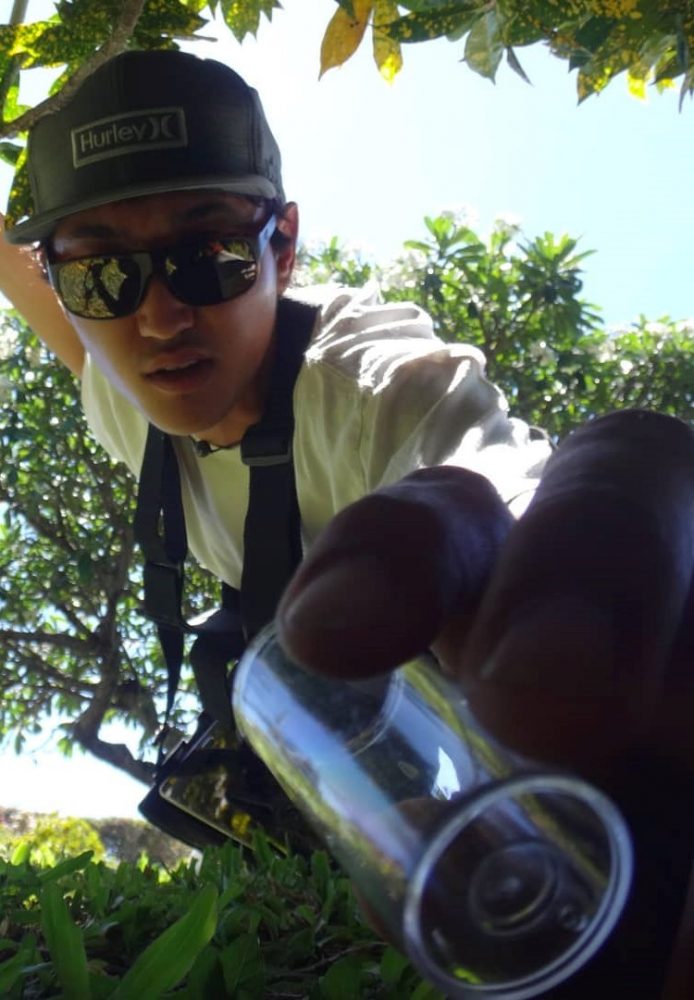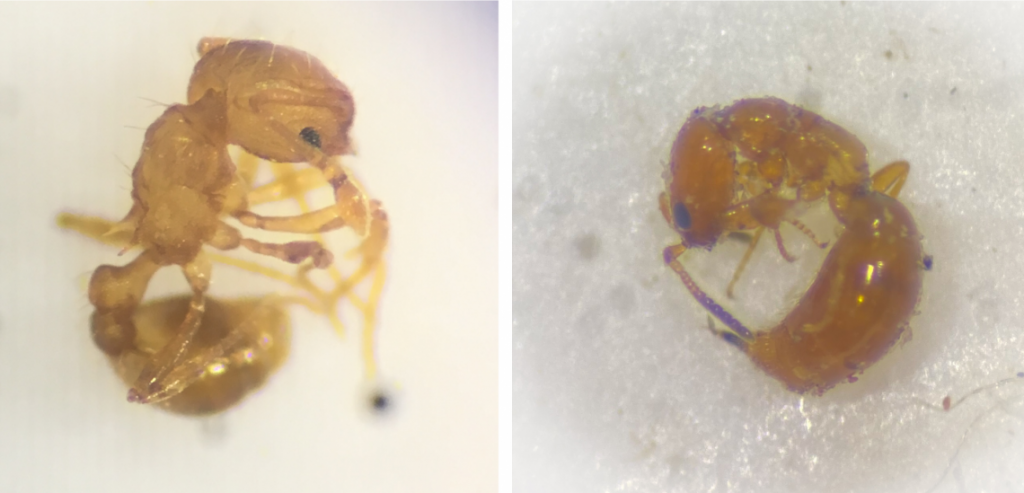In March of this year, a Lahaina couple reported a stinging but slow-moving, tiny ant- armed with a large stinger that left itchy, red welts. Maui Invasive Species Committee (MISC) little fire ant crew leader, Monte Tudor-Long, responded to their report, concerned that the couple had uncovered a new little fire ant infestation. MISC regularly responds to stinging ant reports from members of the public in an effort to prevent the spread of little fire ants (LFA). After samples of the stinging insects were collected and examined, Monte was shocked to find that this was not an ant at all.

Hawaiʻi has no native ants. About 60 ants have become established in our islands since humans arrived. One of the most damaging is the little fire ant, which accidentally arrived to Hawaii Island in the late 1990s, hitchhiking on imported nursery plants. LFA eventually spread to other islands, including Maui, where they were first discovered on an organic farm in 2009. In Hawaii, these invasive ants create multiple super colonies that cover the trees and the ground, quickly outcompeting other insects in the area. In homes and communities, encounters with LFA have left painful welts on humans and have blinded pets and livestock from repeated stings to their eyes.
LFA are considered by the International Union for Conservation of Nature as one of the world’s 100 worst invasive species and are currently being targeted for removal in Maui County.
When Tudor-Long collected several common ants from the Lahaina report, he expected to also find LFA based on the couple’s experience and the red welts they showed him. After viewing them under a microscope, the suspect little fire ant was ruled out from being LFA because its features didn’t match up to one – in fact, its features didn’t match any ant known to be in Hawaii. Upon reaching out to experts to identify this “mystery ant,” it was revealed that it was actually a tiny wasp!

Cephalonomia gallicola is a flightless wasp that arrived in Hawai’i around 1930, hitchhiking in beetle-infested cardboard from India. It typically preys on woodboring and tobacco beetles, which make their homes in everything from shipping materials, furniture, and kitchen cupboards. Parasitic wasps like this one are known to infest sofas and other furniture, particularly second-hand furniture, for this buffet of beetles. This is also where they typically encounter and sting unsuspecting humans.
The Lahaina couple identified the primary source of stings from a recently purchased, second-hand couch- the same location Tudor-Long collected the wasp. Although different treatments are available, the couple opted to dispose of their couch and rid their home of this uninvited guest.
Although cases like this stinging, flightless parasitic wasp may not be common, it is a good example of how pests arrive in Hawaii. On average, one new species arrives in the Hawaiian Islands every three days, usually as an accidental hitchhiker. Although they may not become invasive or established in the wild, reporting unusual and different-looking species right away helps officials respond and identify new potential threats. If you see a strange new plant, insect, or animal, or get stung by a suspect ant, report it to www.643pest.org.
Serena Fukushima is the Public Relations and Education Specialist for the Maui Invasive Species Committee. She holds a bachelor’s degree in environmental studies and a graduate degree in education from the University of Hawaii at Manoa. “Kiaʻi Moku, Guarding the Island” is written by the Maui Invasive Species Committee to provide information on protecting the island from invasive plants and animals that threaten our islands’ environment, economy and quality of life.
This article was originally published in the Maui News on June 12, 2021 as part of the Kia‘i Moku Column from the Maui Invasive Species Committee.
Read more Kiaʻi Moku articles.
